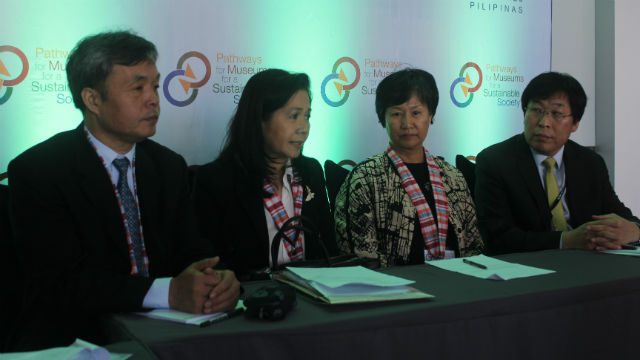SUMMARY
This is AI generated summarization, which may have errors. For context, always refer to the full article.

ILOILO CITY, PHILIPPINES – Some 200 culture and museum leaders from 21 countries across the Asia Pacific region gathered at the newly opened Iloilo Convention Center, from December 3-7, 2015, for t(ICOM- ASPAC).
ICOM-ASPAC 2015 gathered key leaders of culture and museums in the region, in an effort to recognize the community’s role in defining, promoting, and implementing sustainable practices that will explore new knowledge and practices among each of the 24 member countries. The conference aims to create pathways that will put culture and museums at the core of sustainable development.
“The Asia Pacific is the biggest among ICOM’s 7 regions, and it is also rapidly developing and the most diverse. It is necessary to build communication channels with developing countries, and ICOM-ASPAC is a perfect platform to help museums communicate and share their best practices,” Dr Song Xinchao, Chair ICOM-ASPAC, said.
ICOM, a global network of more than 35,000 culture and museum institutions and professionals, is committed in ensuring the conservation and protection of the world’s natural and cultural heritages, through establishing standards of excellence in museum theory and practice.
Sustainable development
With the theme “Pathways for Museums for a Sustainable Society,” the 2015 ICOM-ASPAC conference echoes the ICOM International Museum Day theme “Museums for a Sustainable Society.” This is in line with the United Nations 17 Sustainable Development Goals, with a focus on how museums need to adapt to the changes in today’s social environment, along with its responsibility to reflect social realities, foster learning, and revive cultures to be more relevant in the society.
Among the issues discussed during the conference were culture and museums in the context of sustainable development, urban sustainability, cross cultural communications, and creating sustainable communities. The workshop that later followed worked on identifying sustainability principles and practices for culture and museums.
“This conference is a timely response to the challenge of global sustainable development, underscoring the roles of museums to safeguard and promote cultural heritage, especially on issues of conflicts, poverty, overpopulation, calamities, and disasters,” said ICOM-Philippines Chairwoman Gina Barte.
She added: “This is an opportunity to learn and inspire each other and to recognize our abilities to create positive change though the promotion of heritage and museums.”
Iloilo: Where the past is always present
After hosting a series of Asia Pacific Economic Cooperation (APEC) meetings in September and October 2015, Iloilo City has become an emerging destination for tourism, conventions, and exhibitions. Historically known as the Queen’s City of the South, Iloilo is now striving to sustain and promote its rich culture in the midst of rapid urbanization.
“When we decided to have the ICOM ASPAC in Iloilo City, we considered its readiness. Iloilo is undeniably at the forefront of its tourism and economic development, making it a fertile ground to discuss sustainable development in the context of heritage preservation and cultural promotion,” Barte emphasized.
The local government’s commitment to preserving the heritage of the city and the province is evidenced in its support of the preservation and maintenance of important local sites.
“We can see that Ilonggos want to move forward without leaving their culture and traditions behind. They use these to propel them to the future. Our theme fits with the dreams and goals of this city and the Philippines as a whole,” she added.
The delegates were given a bike tour of the city and the beachside, along with a tour of Guimaras Island.
Among the top spots visited by the delegates were Nelly’s Garden, a grand mansion built in 1928 on a 4-hectare property in Jaro – giving a glimpse of the lives lived by affluent sugar barons of Iloilo – and the Miag-ao Church, built in 1779 and declared as a UNESCO World Heritage Site in 1993. – Rappler.com
Russel Jude Patina Mendez is a Rappler mover in Iloilo City.
Add a comment
How does this make you feel?
There are no comments yet. Add your comment to start the conversation.